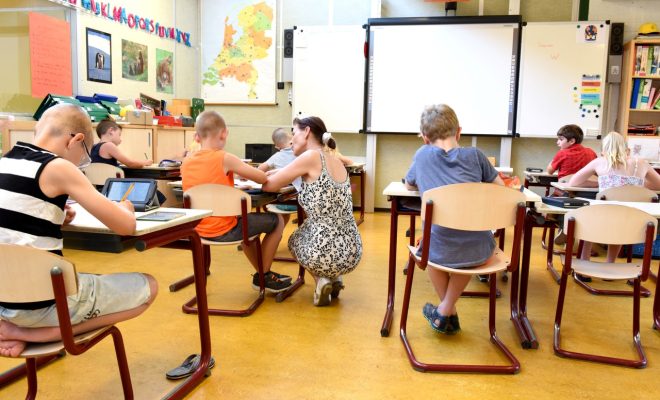Educators: Do You Know About These Alternatives to High-Stakes Tests?

How to best quantify educational achievement and recognize academic progress is a continually hot debate. Standardized tests are too uniform and broad in scope to consistently measure individual competence, and high-stakes tests can put too much importance on a single data point of success or failure.
Many believe that authentic assessments, and not high-stakes standardized tests, are the most appropriate tools to collect information on student learning and progress. They argue that assessing student responses to real-world scenarios or tasks is more meaningful than standardized testing. Authentic assessments provide the additional benefit of pin- pointing where and why a child may be struggling. It is important to take into account that learning is developmental and therefore will occur in any circumstances. Learning occurs naturally when the learner finds there is a purpose behind it. When the subjects being taught are seen as isolated pieces of information, without association or context, learning becomes meaningless.
Much of the current thinking regarding alternative forms of student assessment derives from the concept of higher-order thinking skills first introduced in Benjamin Bloom’s 1956 taxonomy of educational objectives. Bloom noted six levels of thinking skills: knowledge, comprehension, application, analysis, synthesis, and evaluation. Higher-order thinking skills are those skills in the top three levels: analysis, synthesis, and evaluation.
For deep and meaningful learning to occur, teachers must create lessons and activities that develop and routinely assess these skills. Higher-order thinking skills are used when people run into unfamiliar problems. When a person can apply higher-order thinking skills to these occurrences, their decisions are much more likely to engender positive results.
For students to develop higher-order thinking skills, they must first have the ability to use prerequisite lower-order skills such as retaining facts and discriminations. You can help your students develop higher-order thinking skills by providing supportive, effective lessons and structuring assessments that allow them to use those skills.
Authentic assessments encourage students to analyze and interpret their own learning experiences. They generally require students to use higher levels of thinking, integrate the knowledge they have constructed in different areas, and use it for problem-solving situations. It is important to realize that these assessments, while very useful in the classroom setting, may not be appropriate for wide-scale testing, because they are suited for comparatively limited content. They are, however, very well suited to more frequent use than ordinary standardized tests.
Two important authentic assessments are portfolios and exhibitions. A portfolio allows the display of a particular set of skills and knowledge in response to a realistic set of requirements. Often students will be given a chance to prepare in advance for portfolio submissions, which gives the teacher a chance to adequately communicate what is required from the student in the portfolio. The selection of portfolio content and material should be based on goals and standards, and should include a broad range of accomplishments (including products, essays, quizzes, hobbies, etc.). Student portfolios can take many forms, including paper or electronic.
An exhibition requires students to display their understanding of a course or experience as a whole, often without defined requirements. This work is often judged (evaluated) by a panel, or may even be displayed in front of the student’s parents or peers, and thus requires a great deal of preparation. These forms of assessment require teachers to be highly objective during grading, because each portfolio or exhibition will be assessed individually, rather than against set criteria. The teacher will establish a reliable rubric for the assessment of individual work during planning and will communicate the parameters for assessment to the students clearly and unambiguously.
Assessments that are designed to be more individualized or specifically focused in structure can give a much more authentic read of how an individual student is doing. They may take more effort, but the more accurate results they yield also seem to be well worth the extra work.






